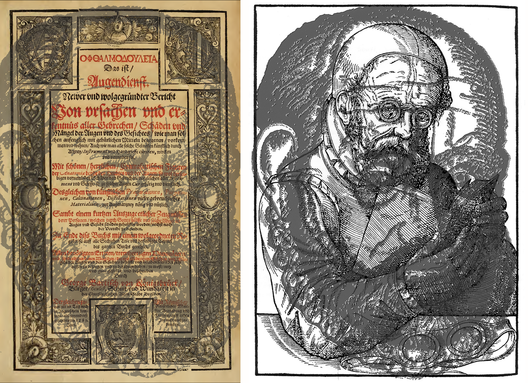Georg Bartisch1535–1607
The emergence of ophthalmology as an independent discipline was not without its mishaps and mavericks despite the antiquity of specialised eye doctors. Several surviving papyri dating from the second millenium B.C. describe disorders and treatments of the eye. For example, the Ebers papyrus describes dimness of sight and strabismus (squint). A millennium later, there were specialists in diseases of the eye practicing in Egypt. It is likely that cataract operations were performed almost three thousand years ago. The transformation from oculists to ophthalmologists took longer in Britain than on Continental Europe. In 1583, Bartisch wrote the book that gave eye doctors their new name: ΟΦΘΑΛΜΟΔΟΥΛΕΙΑ. Das ist, Augendienst. The portrait of Bartisch (which it taken from the book) is combined with both the title page and with an illustration of a man reading with the assistance of eye glasses. The book not only presented many useful remedies and recommendations for treatment of eye diseases, but it also contained multi-layered illustrations of the eye, so that virtual dissections could be undertaken by the reader. Bartisch described and illustrated eye glasses as well as displaying masks designed for those who had convergent or divergent squints. Paré had recommended using simple masks for treating squints, but those illustrated by Bartisch were more elaborate, and he appreciated that correction was more successful with children than adults.
